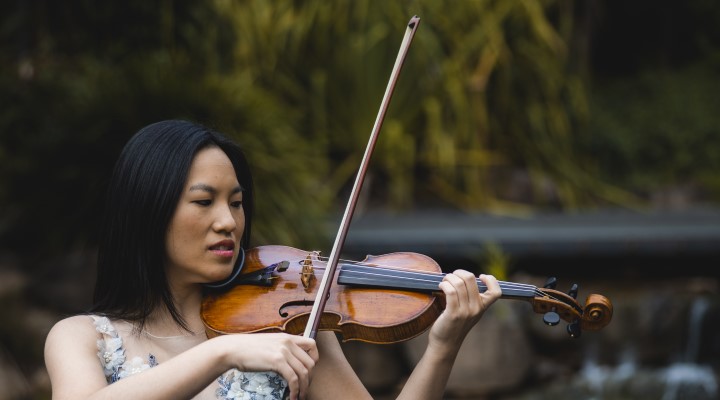Enterprise: Artists By Any Other Name
What is their raison d’etre? To bring together artists from different backgrounds to create unique cultural experiences that engage, inspire and educate audiences, and to create paid opportunities for artists and musicians.
Harmonnia Junus completed a Bachelor of Music degree at the prestigious Mannes College of Music in New York and went on to perform at prestigious venues such as the Sydney Opera House, Jiaozi Concert Hall in Chengdu, Carnegie Hall in New York and the National Cathedral in Washington DC. Playing under the baton of maestros such as Gernot Schmalfuss, Xu Dong Yang, Dane Lam and Simon Kenway allowed Harmonnia to collaborate with world-class artists to produce performances that are a fusion of artistic disciplines, and to explore how music with different cultural influences can be unified to create unique and enriching performances.
Harmonnia first launched her venture, Artists By Any Other Name (ABAON), in New York City in 2015, as a contemporary dance and chamber music collective. “During my Master’s Degree at Mannes, Entrepreneurial Musician was a compulsory subject, and it really sparked my ‘I can make anything happen’ attitude,” she explains. “I really enjoy the collaborative process, working with other musicians and creative disciplines so I wanted to create a community of artists, for artists, so that they could work on projects and create their own performances without the financial burden of producing a concert.”
ABAON’s first concert, performed on Valentine’s Day, was called Love: Classical to Contemporary. “As a performance with different disciplines, we engage audiences in different ways,” Harmonnia explains. “Some people are more auditory, and some are more visual. One of my favourite comments from an audience member was that they could see how the dance enhanced the music, and the music enhanced the dance.”
Over time, Harmonnia started bringing the group to Australia once a year and she officially launched in Australia in 2018, subsequently registering as an NFP through the Australian Charities and Not-for-profits Commission (ACNC) in November 2020, having realised that there are very few organisations that serve the needs of artists in the creative industry in this country.
“We created these performances, among others, to create paid opportunities for artists and musicians.”
As an NFP venture, ABAON is funded from sponsorships, performances and corporate activations. Harmonnia developed performances such as Legends & Lanterns, a celebration of Chinese Lunar New Year featuring much-loved pieces from the classical Chinese repertoire complemented by a selection of Western works, and Wanderlust, a musical adventure that explores the beauty and diversity of the world through music inspired by six continents. Wanderlust was performed at the Sydney Opera House. “We created these performances, among others, to create paid opportunities for artists and musicians who are paid through ticket sales in addition to funding,” Harmonnia explains. “We present regular performances and are always conversing with the artist community, exchanging ideas for future performances.”
ABAON’s mission is to bring together artists from different backgrounds to create unique cultural experiences that engage, inspire and educate audiences. “Developing high-quality musical performances is also a key focus and something we are very proud of achieving,” Harmonnia avers. “I have worked with many inspiring female musicians over the years, from tutelage to those in business that have provided support and funding – too many to name individually. What I have learnt from all of them, without exception, is that anything can be done if you believe in your vision and stay true to what you are achieving.”
Looking to the future, Harmonnia hopes to see ABAON grow next year, in terms of its number of performances and in the opportunities it is able to create for Australia’s musical community so it can continue to thrive and develop.
This article first appeared in issue 43 of the Inside Small Business quarterly magazine
















